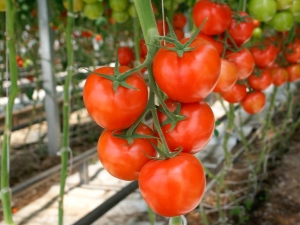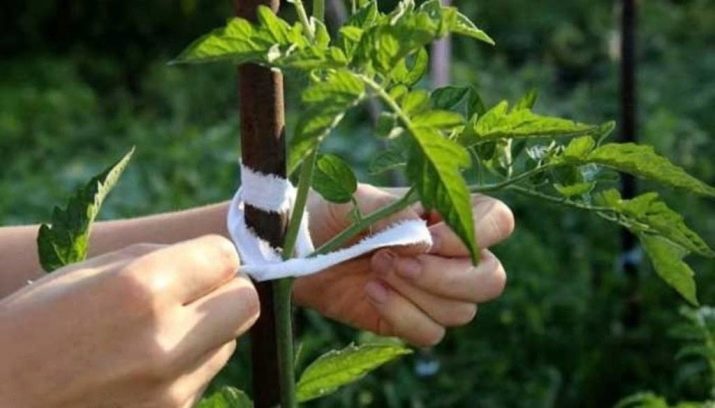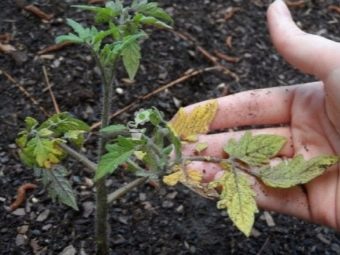How to care for tomatoes: secrets and methods of growing

It is difficult to imagine a vegetable garden without tomatoes. They are used both fresh and preserved for the winter. It is believed that this culture is quite capricious when grown.Is it so - we analyze in this article.
Special features
Tomatoes belong to the Solanaceae family and are grown by gardeners as an annual crop. They eat the fruits formed after the formation of ovaries, which have red, yellow or orange shades.
The height of the bush varies between 50 cm - 3 m and depends on the characteristics of the variety and care, climate. There are determinant varieties and indeterminant varieties. The former have a point of growth inherent in nature and, having reached it, independently stop growing high. The latter do not have such points, therefore, to obtain a high-quality crop, it is necessary to periodically pinch the upper part of the bush.
Tomatoes are grown both in open ground and in the greenhouse. However, initially seeds are usually grown at home, sowing in early to mid-March.
In open ground or greenhouse, seedlings are transported after 55-65 days from the time of sowing, also focusing on air and soil temperature.
For growing use seeds or shoots. The first purchase in stores or harvested from the most successful fruits grown in the past year. An important point - the last method can be grown only non-hybrid varieties of tomatoes. Hybrid need to be updated annually, buying new seeds, otherwise the result may be unpredictable. You can also root stepchildren, placing them in the water before the roots or immediately in the ground.
Depending on the speed of fruit ripening, tomatoes are divided into early-ripening, mid-ripening and late ripening. Early ripening ripens 80-95 days after planting, late ripening after 118-125 days. Mid-season have an intermediate between these two time indicator.
As a rule, early-ripening varieties delight the crop in early-mid-July, but not every variety is suitable for long-term storage and preservation. These tomatoes are usually consumed fresh.
The late-ripen harvest is removed from late August to mid-September (and sometimes the first frosts), it is characterized by its long-term storage capacity, and is well suited for winter harvesting.
To care for tomatoes is quite a responsible occupation. Being a southern culture, they are extremely demanding on the temperature regime, the length of daylight, the quality of the soil and the characteristics of irrigation.
Hybrids are considered easier to care for, they are usually deterministic, do not require staking, tolerate temperature fluctuations well, and are characterized by resistance to the most common diseases for tomatoes. With a lack of experience, it is recommended to breed exactly hybrid tomatoes as easier to care for.
However, in the opinion of many gardeners, hybrid tomatoes are inferior to non-hybrid in taste. The latter demonstrate the diversity of tastes, while the hybrid "all for one taste." By the way, the taste characteristics also depend on the growing conditions - the most delicious tomatoes grown and ripened on the branch.
Tomatoes have a developed root system and demonstrate the best results on enriched, slightly acidified soils. The best is a combination of black soil, humus and peat.
Tomatoes are involved in crop rotation, therefore, to increase their yield, it is recommended to plant them on the beds where cucumbers, beets, onions, cabbage, peas, and radishes grew on last year. It is impossible to plant tomatoes on sites where solanaceous grew before - potatoes, pepper, cucumbers, eggplants. In this case, the probability of infection of tomatoes with infections characteristic of this type of crop is high. For the same reason, tomatoes should not be planted next to the listed vegetables.
For culture, a warm sunny place without drafts is chosen. Tomatoes should receive sunlight and heat for at least 7-8 hours a day. For this reason, they cannot be planted along fences, under trees, where they will not be able to bear fruit.
Landing rules
When planting seeds last need to prepare.Quality seeds should not be empty, have dark spots and other imperfections. After a visual inspection of the seeds can be dipped in a glass of water. Those that have fallen to the bottom are suitable for future use. Floating on the surface - will not ascend or will not give a quality crop.
The majority of diseases of adult plants (up to 80%) are associated with infection of seeds, from which they have hatch, therefore disinfection is an extremely important procedure.
For its implementation it is necessary to dilute 1 g of potassium permanganate in a liter of water and mix the mixture thoroughly. Tie the seeds into a gauze bag and lower the solution for no more than 30 minutes.
Next, the seeds should be washed in clean running water, after which it is recommended to treat them with a means to stimulate growth. This will improve germination and reduce the time of appearance of seedlings.
Biostimulant growth should pour the seeds, you can also leave them in a bag of gauze, or put them in the solution itself for 10-12 hours. Now the seeds are ready for planting. They are immersed in the ground at a distance of 2 cm from each other, if we are talking about growing in common boxes, or 2-3 pieces when grown in individual pots.
With this technique of planting seedlings after the appearance of two leaves will have to thin out. You can avoid this by first germinating the seeds. To do this, they are placed on a saucer, it is better to lay a piece of cloth or gauze under the seeds, and pour water at room temperature. Top also covered with a cloth. Now you need to place the towel in a warm place, for example, on a windowsill and moisten it as needed.
A few days later, seeds will appear from seeds, after which they can be transplanted into the ground. After the seeds are planted, they are sprinkled with earth (about 1 cm thick), moistened (preferably with a spray) and covered with glass or plastic wrap. In this form, the container is left at a temperature of +25 until the first shoots appear.
When this happens, the glass or film is removed, you can reduce the air temperature by 1-2 degrees. After a week and a half, when the seedlings will find 2 leaves, they pick a pick. Weak plants are removed, if necessary, transplanted into other containers.
A few days after the picking, it is necessary to harden the seedlings, placing it for a few days (3-5) in a temperature reduced to 15-18 degrees.
Another hardening of the plant is expected a week or two before landing in the ground. However, in this case, the plants are carried out already on the street, first for half an hour a day, and then for 2-3 hours.
Care
After 55-65 days from the moment of planting, the tomatoes can be transplanted into a greenhouse or open ground. As a rule, the bushes by this time reach 10-15 cm, they are strong, and in boxes and pots they become clearly crowded.
That's right when planting tomatoes to focus not so much on the recommendations of the seed manufacturer, but rather on the weather conditions. In the greenhouse, tomatoes can be transplanted from the end of April (if the structure is equipped with a heating system) or the end of May. In open ground - not earlier than the first half of June. At the same time there should be no night frosts, the temperature of the air at night should not fall below +10, the temperature of the soil - no less than +8.
It is recommended to plant tomatoes in dry windless weather, preferably in the evening. It is recommended to prepare the soil for them in the fall - dig, make humus. However, if this was not done in advance, you can perform the procedure for 3-4 days before planting.
The depth of the holes is usually 25-30 cm, but this may also depend on the variety. It is necessary to focus on the height of the plant - its lower leaves should be located quite high above the ground.
Between seedlings, a distance of up to 50 cm is usually preserved. The holes are pre-moistened, and the bushes are transplanted by the method of transshipment, that is, together with an earthy clod from a pot or box.This allows you to cause minimum damage to the roots, speeding up the time of plant engraftment.
Planting tomatoes can only be in a warm ground, otherwise they will adapt for a long time, and may die. Additionally, the soil can be heated by stretching a transparent polyethylene film on its surface 2-3 days before planting. Greenhouse conditions are formed under the film, which will contribute to the heating of the earth.
Immediately after planting is recommended to tie up the seedlings. A few days later, most likely, you will need to pour a little bit of earth, as new roots form close to the surface.
One week after transplantation into open ground, nitrogenous fertilizers can be applied to strengthen the root system. The procedure should be repeated every 2-3 weeks until the formation of flowers. During the formation of ovaries and fruiting recommended potash-phosphorus fertilizer.
To get a good harvest, it is necessary to form a bush from one, maximum two trunks. Interderminant cultures should be clamped after 5-6 brushes for ground tomatoes and after 7-8 for those that grow in a greenhouse or greenhouse.
It is necessary to dive extra lateral processes that will pull the plant's strength, preventing it from forming flowers and ovaries. Dives should be dived before they reach more than 5 cm in length. Otherwise, the plant can get sick.
You can not dive at once all the plants, because it is stressful for the bush.
By the way, greenhouse bushes are extremely demanding for air exchange inside the structure, so the latter should be equipped with air vents and doors.
Watering tomatoes is recommended every 5-7 days, preventing drying of the upper soil layers and stagnant moisture. The lack of moisture causes a lack of strength in the plant for growth and fruiting, the excess causes rotting of the roots and the stem.
For watering should use warm water, pouring it as close as possible to the root. Immediately after watering, it is recommended to loosen the soil, which will help prevent moisture stagnation.
If it is not possible to loosen after each watering, it should be done at least every 2 weeks. Once a month it is necessary to loosen the soil between the rows.
They remove the fruits mainly as they ripen. Almost all varieties of tomato, being removed from the bush brown, perfectly ripen at home on the windowsill.
Diseases and pests
Most modern tomato varieties are resistant to diseases and infections. Solanaceous late blight and attack of various fungi are most susceptible. Late blight manifests itself as black spots on the leaves. When detecting the first signs of phytophtora, the affected plant should be treated, as well as the remaining bushes for the purpose of prophylaxis with special means.
If it is not possible to cure the shrub, it is recommended to remove it, sanitize the growing place to prevent the death of the remaining tomatoes. Similarly, come with a black leg, usually arising due to stagnant moisture in the soil and its airtightness.
Yellowed foliage indicates damage to the root system. If the leaves turned yellow only a little and it happened after transplantation into open ground, this phenomenon is considered permissible. After the plant adapts and restores the roots, the leaves no longer turn yellow.
Yellow leaves during growing seedlings in boxes or pots indicate that the roots do not have enough space and land. It is necessary either to replant them in the ground or greenhouse, or to increase the volume of containers for home cultivation.
With the Colorado potato beetle, which affects soil tomatoes, it is better to fight insecticides specifically designed for this purpose. The bushes can be removed from the aphids and cobwebs that appear by spraying them with soap and water.
When spraying, it is important to handle both the external surfaces of the sheet and the internal ones.
Experienced Gardeners Tips
For a good harvest, experienced gardeners recommend the following:
- Only sprouts that appear during watering can be damaged, and using a pipette for watering will help to avoid this. It needs to be filled with water and set the spout between the soil and the wall of the seedling cup. It remains only to release water from the pipette in sufficient quantities.
- The secret to keeping the stem from rotting and damage at the point of contact with the garter is to use synthetic, not natural, materials for garter.
- If you want to increase the number of tomatoes, you can multiply them by diving. And in order for the severed process to give roots faster, mineral fertilizers or a growth stimulator used for seeds can be added to the water in it.
Recommendations for the care of tomatoes, see the following video.



































